实例介绍
【实例截图】
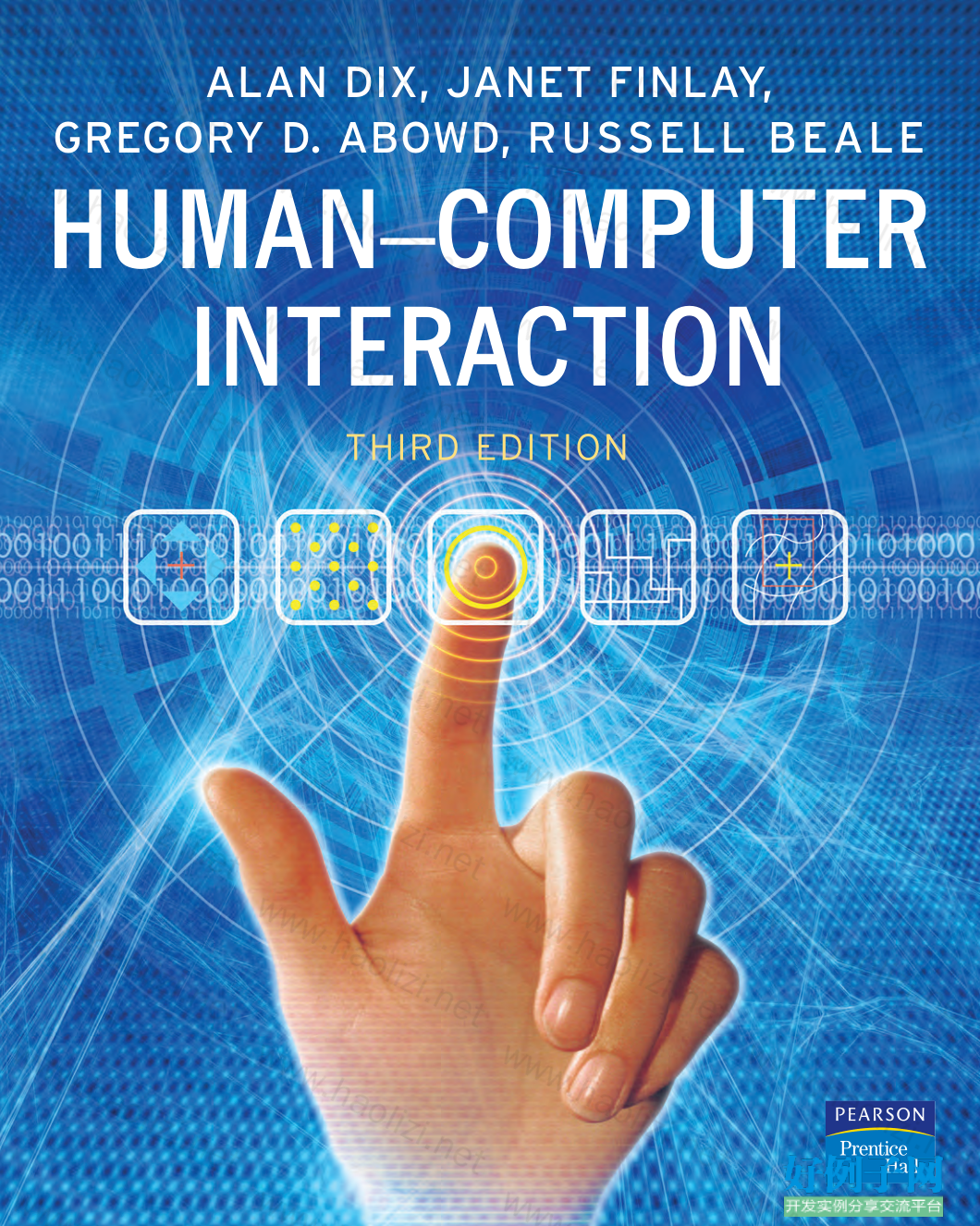

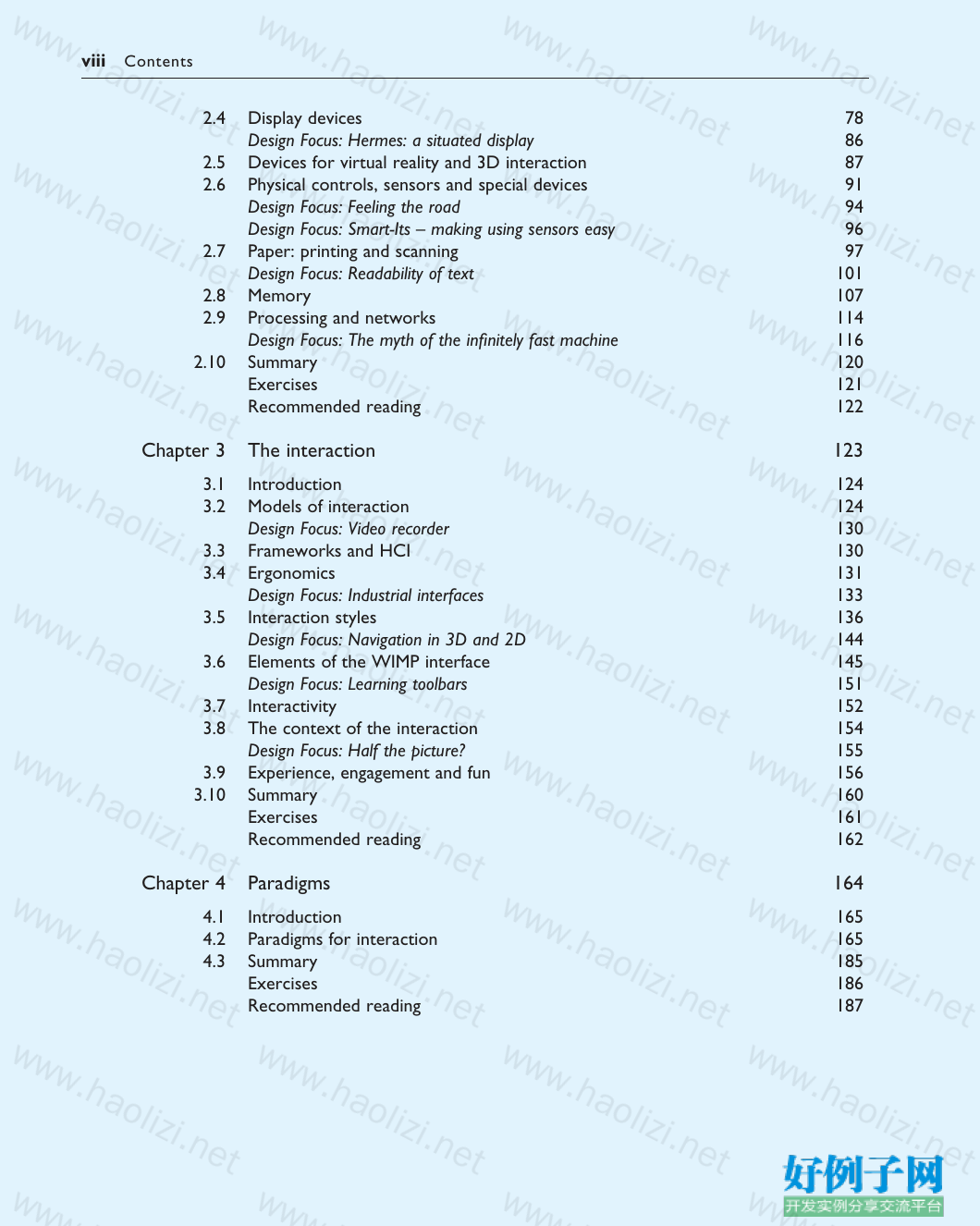
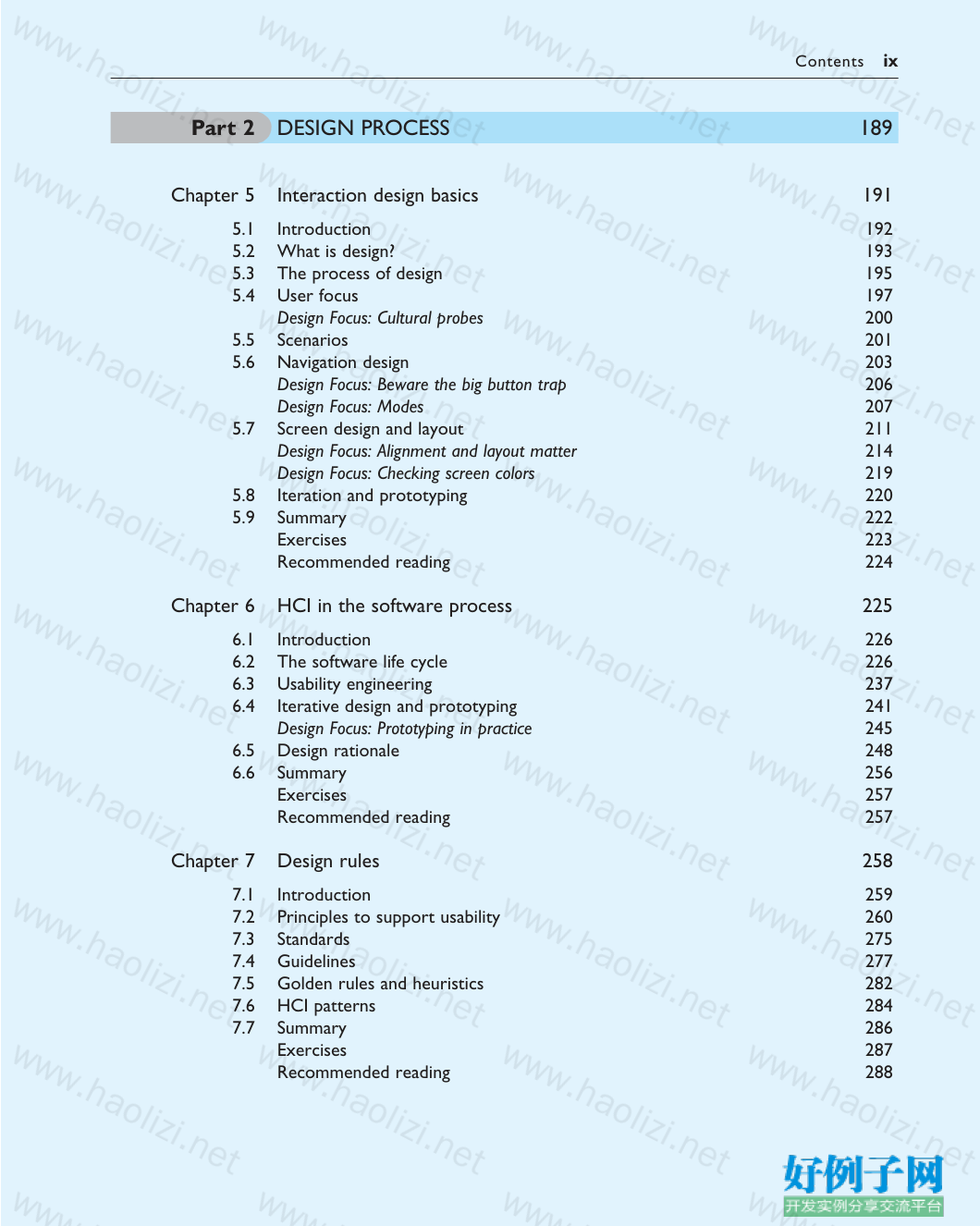
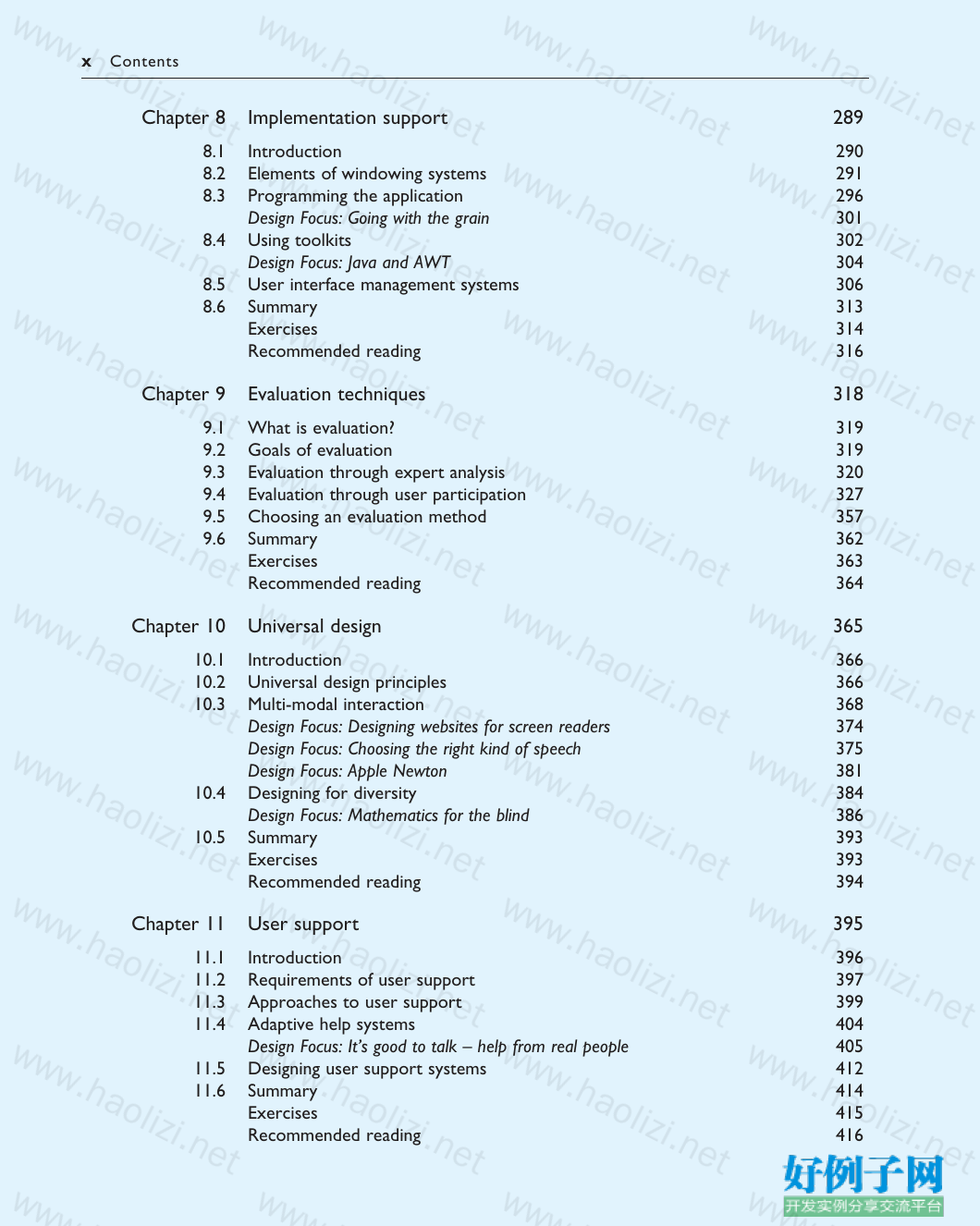
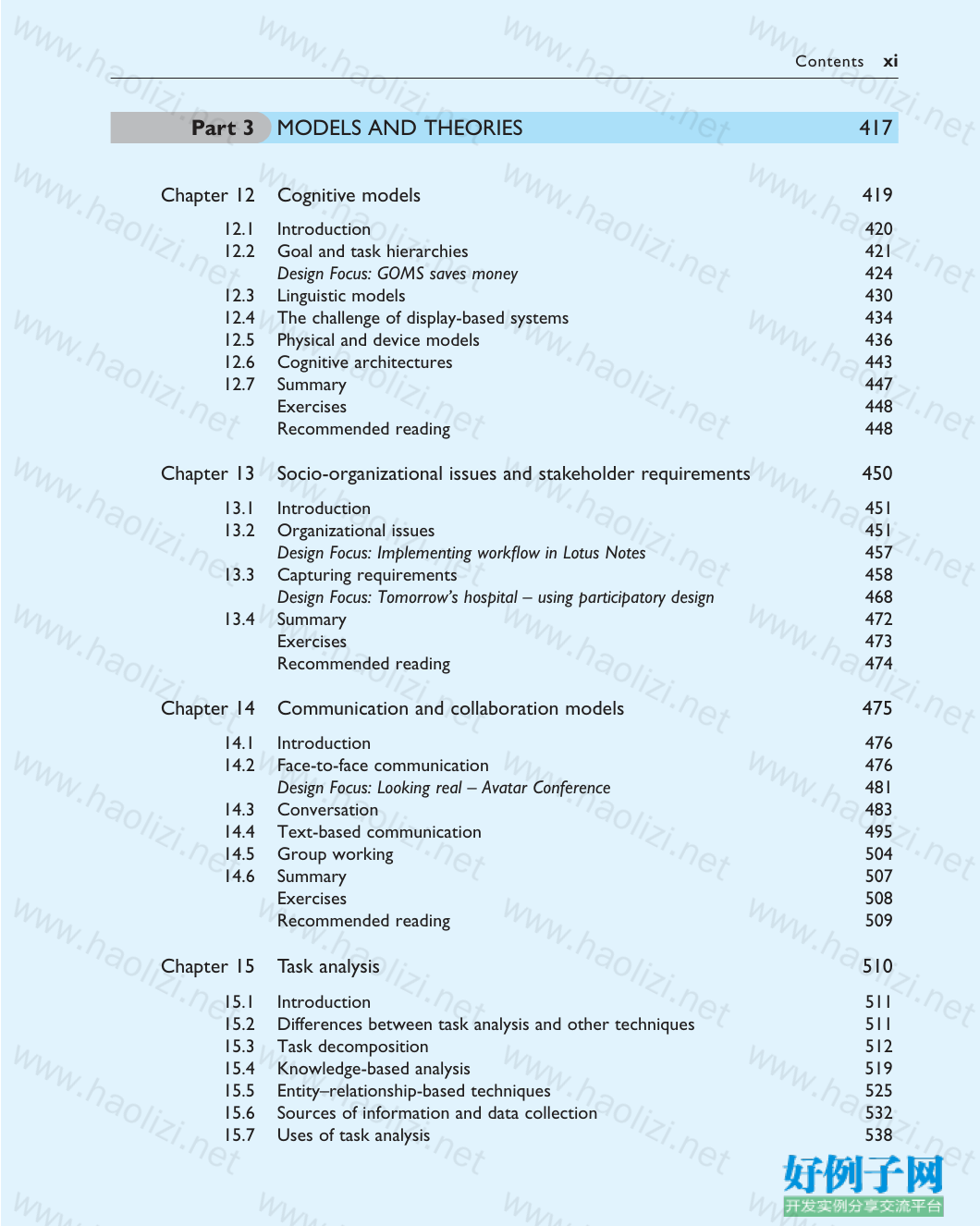
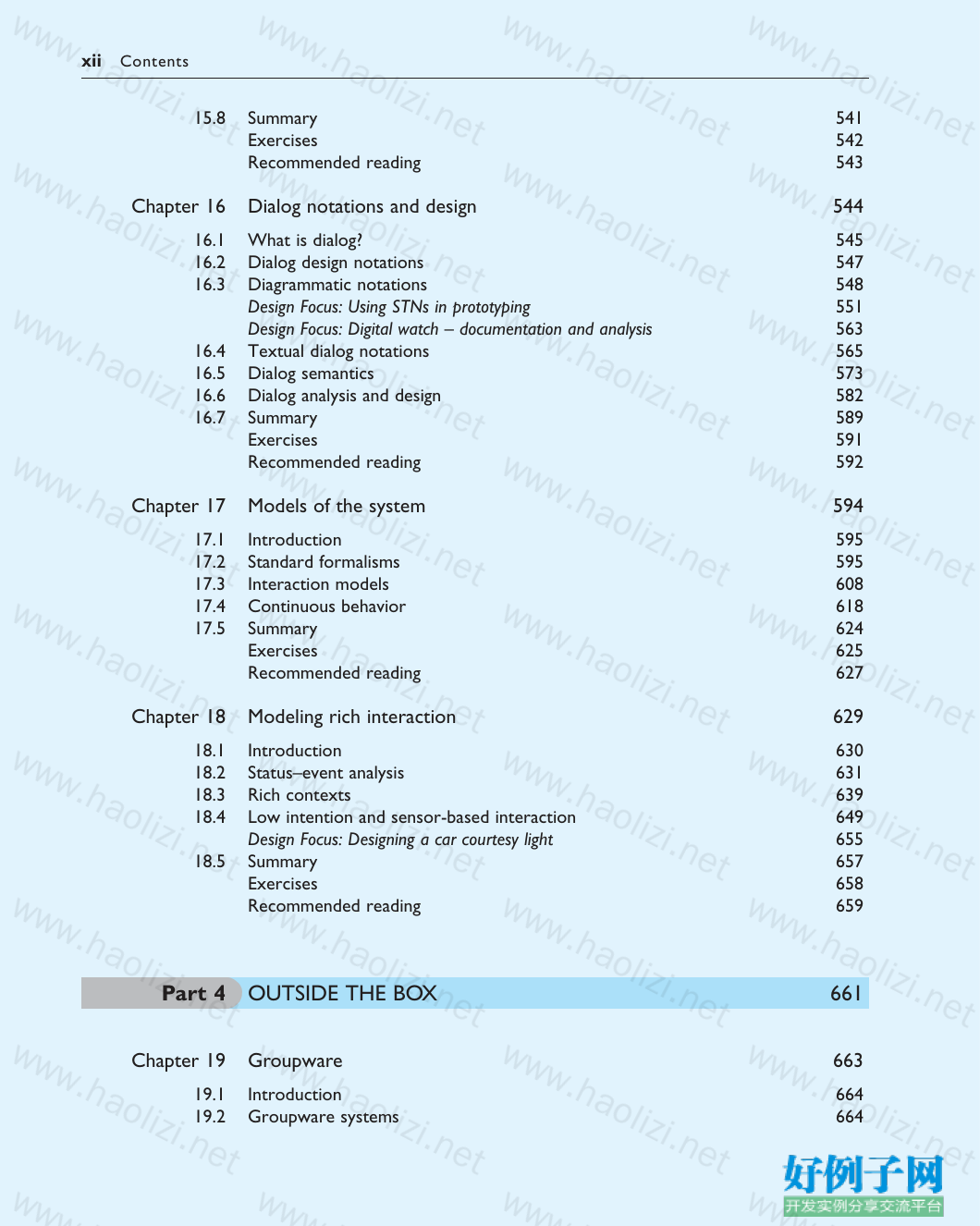
【核心代码】
C ONTENTS
Guided tour xiv
Foreword xvi
Preface to the third edition xix
Publisher’s acknowledgements xxiii
Introduction 1
FOUNDATIONS 9
Chapter 1 The human 11
1.1 Introduction 12
1.2 Input–output channels 13
Design Focus: Getting noticed 16
Design Focus: Where’s the middle? 22
1.3 Human memory 27
Design Focus: Cashing in 30
Design Focus: 7 ± 2 revisited 32
1.4 Thinking: reasoning and problem solving 39
Design Focus: Human error and false memories 49
1.5 Emotion 51
1.6 Individual differences 52
1.7 Psychology and the design of interactive systems 53
1.8 Summary 55
Exercises 56
Recommended reading 57
Chapter 2 The computer 59
2.1 Introduction 60
2.2 Text entry devices 63
Design Focus: Numeric keypads 67
2.3 Positioning, pointing and drawing 71
Part 1
viii Contents
2.4 Display devices 78
Design Focus: Hermes: a situated display 86
2.5 Devices for virtual reality and 3D interaction 87
2.6 Physical controls, sensors and special devices 91
Design Focus: Feeling the road 94
Design Focus: Smart-Its – making using sensors easy 96
2.7 Paper: printing and scanning 97
Design Focus: Readability of text 101
2.8 Memory 107
2.9 Processing and networks 114
Design Focus: The myth of the infinitely fast machine 116
2.10 Summary 120
Exercises 121
Recommended reading 122
Chapter 3 The interaction 123
3.1 Introduction 124
3.2 Models of interaction 124
Design Focus: Video recorder 130
3.3 Frameworks and HCI 130
3.4 Ergonomics 131
Design Focus: Industrial interfaces 133
3.5 Interaction styles 136
Design Focus: Navigation in 3D and 2D 144
3.6 Elements of the WIMP interface 145
Design Focus: Learning toolbars 151
3.7 Interactivity 152
3.8 The context of the interaction 154
Design Focus: Half the picture? 155
3.9 Experience, engagement and fun 156
3.10 Summary 160
Exercises 161
Recommended reading 162
Chapter 4 Paradigms 164
4.1 Introduction 165
4.2 Paradigms for interaction 165
4.3 Summary 185
Exercises 186
Recommended reading 187
Contents ix
DESIGN PROCESS 189
Chapter 5 Interaction design basics 191
5.1 Introduction 192
5.2 What is design? 193
5.3 The process of design 195
5.4 User focus 197
Design Focus: Cultural probes 200
5.5 Scenarios 201
5.6 Navigation design 203
Design Focus: Beware the big button trap 206
Design Focus: Modes 207
5.7 Screen design and layout 211
Design Focus: Alignment and layout matter 214
Design Focus: Checking screen colors 219
5.8 Iteration and prototyping 220
5.9 Summary 222
Exercises 223
Recommended reading 224
Chapter 6 HCI in the software process 225
6.1 Introduction 226
6.2 The software life cycle 226
6.3 Usability engineering 237
6.4 Iterative design and prototyping 241
Design Focus: Prototyping in practice 245
6.5 Design rationale 248
6.6 Summary 256
Exercises 257
Recommended reading 257
Chapter 7 Design rules 258
7.1 Introduction 259
7.2 Principles to support usability 260
7.3 Standards 275
7.4 Guidelines 277
7.5 Golden rules and heuristics 282
7.6 HCI patterns 284
7.7 Summary 286
Exercises 287
Recommended reading 288
Part 2
x Contents
Chapter 8 Implementation support 289
8.1 Introduction 290
8.2 Elements of windowing systems 291
8.3 Programming the application 296
Design Focus: Going with the grain 301
8.4 Using toolkits 302
Design Focus: Java and AWT 304
8.5 User interface management systems 306
8.6 Summary 313
Exercises 314
Recommended reading 316
Chapter 9 Evaluation techniques 318
9.1 What is evaluation? 319
9.2 Goals of evaluation 319
9.3 Evaluation through expert analysis 320
9.4 Evaluation through user participation 327
9.5 Choosing an evaluation method 357
9.6 Summary 362
Exercises 363
Recommended reading 364
Chapter 10 Universal design 365
10.1 Introduction 366
10.2 Universal design principles 366
10.3 Multi-modal interaction 368
Design Focus: Designing websites for screen readers 374
Design Focus: Choosing the right kind of speech 375
Design Focus: Apple Newton 381
10.4 Designing for diversity 384
Design Focus: Mathematics for the blind 386
10.5 Summary 393
Exercises 393
Recommended reading 394
Chapter 11 User support 395
11.1 Introduction 396
11.2 Requirements of user support 397
11.3 Approaches to user support 399
11.4 Adaptive help systems 404
Design Focus: It’s good to talk – help from real people 405
11.5 Designing user support systems 412
11.6 Summary 414
Exercises 415
Recommended reading 416
Contents xi
MODELS AND THEORIES 417
Chapter 12 Cognitive models 419
12.1 Introduction 420
12.2 Goal and task hierarchies 421
Design Focus: GOMS saves money 424
12.3 Linguistic models 430
12.4 The challenge of display-based systems 434
12.5 Physical and device models 436
12.6 Cognitive architectures 443
12.7 Summary 447
Exercises 448
Recommended reading 448
Chapter 13 Socio-organizational issues and stakeholder requirements 450
13.1 Introduction 451
13.2 Organizational issues 451
Design Focus: Implementing workflow in Lotus Notes 457
13.3 Capturing requirements 458
Design Focus: Tomorrow’s hospital – using participatory design 468
13.4 Summary 472
Exercises 473
Recommended reading 474
Chapter 14 Communication and collaboration models 475
14.1 Introduction 476
14.2 Face-to-face communication 476
Design Focus: Looking real – Avatar Conference 481
14.3 Conversation 483
14.4 Text-based communication 495
14.5 Group working 504
14.6 Summary 507
Exercises 508
Recommended reading 509
Chapter 15 Task analysis 510
15.1 Introduction 511
15.2 Differences between task analysis and other techniques 511
15.3 Task decomposition 512
15.4 Knowledge-based analysis 519
15.5 Entity–relationship-based techniques 525
15.6 Sources of information and data collection 532
15.7 Uses of task analysis 538
Part 3
xii Contents
15.8 Summary 541
Exercises 542
Recommended reading 543
Chapter 16 Dialog notations and design 544
16.1 What is dialog? 545
16.2 Dialog design notations 547
16.3 Diagrammatic notations 548
Design Focus: Using STNs in prototyping 551
Design Focus: Digital watch – documentation and analysis 563
16.4 Textual dialog notations 565
16.5 Dialog semantics 573
16.6 Dialog analysis and design 582
16.7 Summary 589
Exercises 591
Recommended reading 592
Chapter 17 Models of the system 594
17.1 Introduction 595
17.2 Standard formalisms 595
17.3 Interaction models 608
17.4 Continuous behavior 618
17.5 Summary 624
Exercises 625
Recommended reading 627
Chapter 18 Modeling rich interaction 629
18.1 Introduction 630
18.2 Status–event analysis 631
18.3 Rich contexts 639
18.4 Low intention and sensor-based interaction 649
Design Focus: Designing a car courtesy light 655
18.5 Summary 657
Exercises 658
Recommended reading 659
OUTSIDE THE BOX 661
Chapter 19 Groupware 663
19.1 Introduction 664
19.2 Groupware systems 664
小贴士
感谢您为本站写下的评论,您的评论对其它用户来说具有重要的参考价值,所以请认真填写。
- 类似“顶”、“沙发”之类没有营养的文字,对勤劳贡献的楼主来说是令人沮丧的反馈信息。
- 相信您也不想看到一排文字/表情墙,所以请不要反馈意义不大的重复字符,也请尽量不要纯表情的回复。
- 提问之前请再仔细看一遍楼主的说明,或许是您遗漏了。
- 请勿到处挖坑绊人、招贴广告。既占空间让人厌烦,又没人会搭理,于人于己都无利。
关于好例子网
本站旨在为广大IT学习爱好者提供一个非营利性互相学习交流分享平台。本站所有资源都可以被免费获取学习研究。本站资源来自网友分享,对搜索内容的合法性不具有预见性、识别性、控制性,仅供学习研究,请务必在下载后24小时内给予删除,不得用于其他任何用途,否则后果自负。基于互联网的特殊性,平台无法对用户传输的作品、信息、内容的权属或合法性、安全性、合规性、真实性、科学性、完整权、有效性等进行实质审查;无论平台是否已进行审查,用户均应自行承担因其传输的作品、信息、内容而可能或已经产生的侵权或权属纠纷等法律责任。本站所有资源不代表本站的观点或立场,基于网友分享,根据中国法律《信息网络传播权保护条例》第二十二与二十三条之规定,若资源存在侵权或相关问题请联系本站客服人员,点此联系我们。关于更多版权及免责申明参见 版权及免责申明



网友评论
我要评论